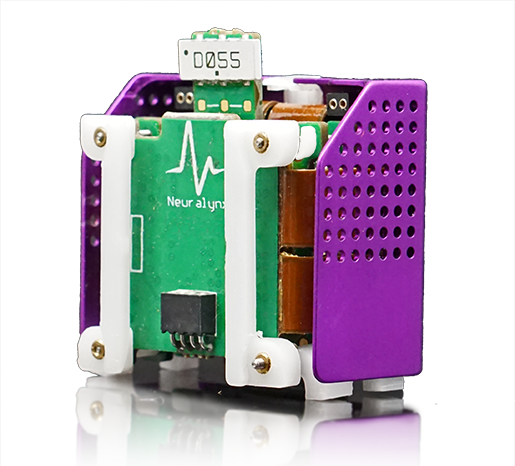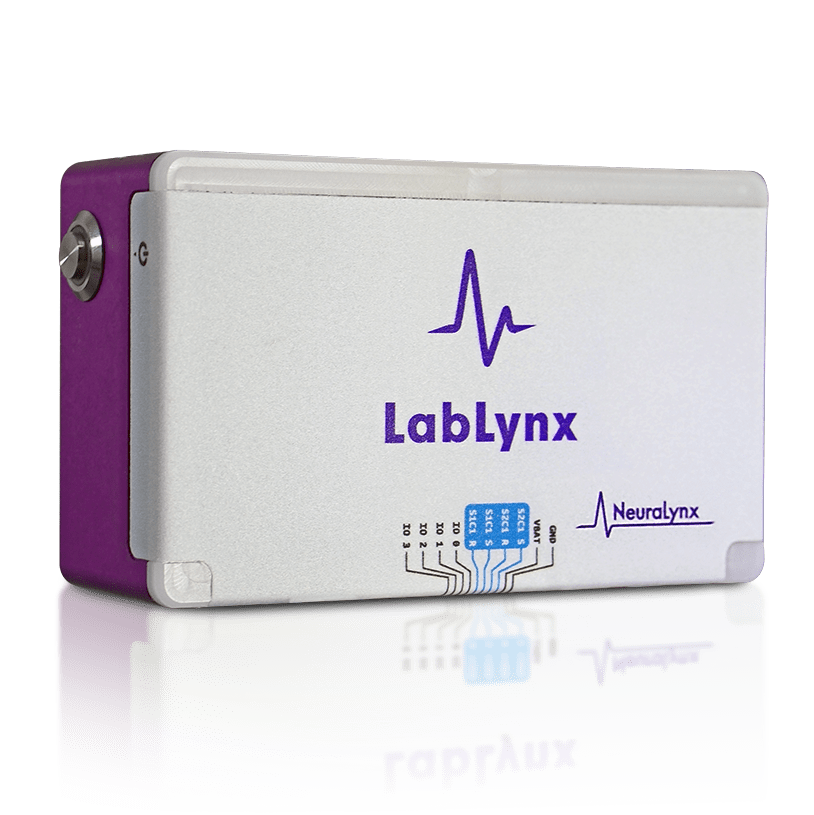Data Acquisition
We offer three main systems that are customizable to meet your electrophysiology experiment needs
Schedule A DemoDigital Lynx SX
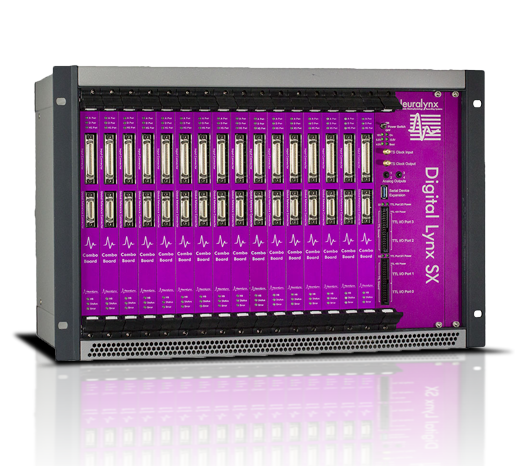
High Performance, Expandable Recording System with Closed Loop Processing
Learn MoreCheetah
All Neuralynx’ basic research data acquisition systems integrate with our extremely stable, user-friendly, high-performance software package. Backed by two decades of continuous development, Cheetah Software is the ultimate solution for neural signal processing, display, recording, and network data distribution.
Cheetah Software
Hardware Processing Platform
(HPP v1.0.0). A closed loop signal processing platform that connects directly to the Digital Lynx SX motherboard, providing real-time data analysis and response for low-latency feedback stimulation experiments.
Differential Stim
Neuralynx animal interface devices include this unique feature, giving researchers built-in channels for self reward stimulation, lighting LEDs, joint shock delivery, eye-blink detection sensors, microphone signals, unbuffered signal transmission, or complex stimulus control. Up to 250 milliamps can be carried by these lines and the nominal resistance is about 3 ohms per meter. All Neuralynx acquisition systems may take advantage of this feature, depending on the actual interface devices chosen for your experiment.
Video Tracking
All Neuralynx acquisition systems are compatible with our video tracking solutions, supporting position, navigation, head direction and grid cell studies with multiple targets. Video tracking data is synchronized with neural signal data by Cheetah Software, enabled through a separate VTS license.
Optogenetics
Neuralynx research partners enjoy a simple, lightweight, easy to use optogenetic stimulus solution: Halo Microdrives and Fiber Mounted LEDs. These devices incorporate an independently-adjustable light source into the microdrive as an additional shuttle, delivering consistent blue, green, amber, or red wavelengths without additional optical connections, patch cords, ferrules, or FORJ. Ask your sales representative for more details.
Configuration Options
Digital Lynx SX
At the center of this system is the Digital Lynx SX acquisition amplifier chassis. Designed for stationary or cart-mounted lab installations, the Digital Lynx SX is available in either 4 or 16 slots (4SX or 16SX), for population of up to 16 Digital Lynx Combo Boards per chassis. The Combo Board’s MDR50 analog input ports receive data from a vast range of available analog animal interfaces, commutators, and adapters to meet researcher’s implant type, mass, channel count, and stimulus requirements. Each Combo Board digitizes up to 32 analog input channels at 24 bit resolution, with an additional 8 software selectable references, 8 global references, and 2 differential stimulus channels available.
The Digital Lynx SX may also be configured to input 16 bit data from digital multiplexing headstages (HS-xx-mux) with the SX-M chassis option, or input data from the FreeLynx with a router connection. Additional configurations for optogenetics experiments, user-programmable low-latency processing and feedback, and external devices are facilitated by mezzanine board expansion, and high speed serial ports. Connection to Cheetah Workstation(s) is made via 2 ethernet over fiber connections for data analysis and experiment control.
- Up to 512 channels (analog) with 8 software-selectable references and 8 global references
- Up to 128 channels (digital) with up to 4 fixed references. See our TechTip: Analog vs. Digital
- Extensive selection of animal interface options
- Highly expandable for stimulus and experiment control
- Includes Hardware Processing Platform (HPP) for real-time, closed loop signal processing.
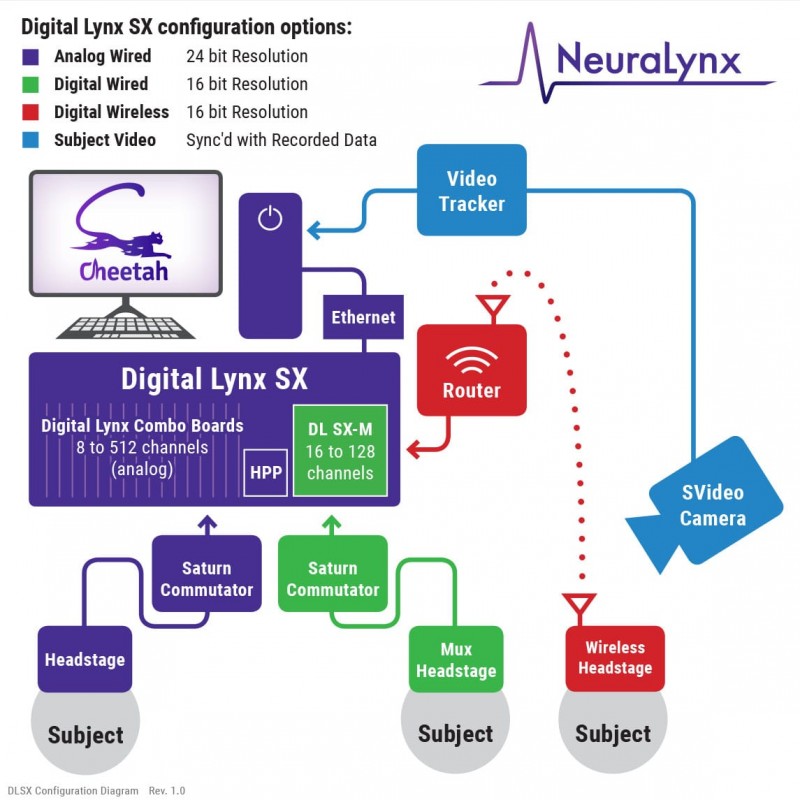
FreeLynx
The core of the FreeLynx System is a lightweight, wireless, subject-mounted digital headstage and telemetry device – FreeLynx. This device comprises three main components, an analog front end (AFE) interfacing the neural implant, a quick-change rechargeable battery, and the FreeLynx Base. The AFE may be configured, in increments of 32, up to 256 input channels. Batteries are available in sizes from 6.8 grams to 24+ hours of runtime, depending on experiment duration and mass requirements. The device may be further configured for optimal mass distribution by separating the battery and base from the AFE to a backpack position on the subject.
The FreeLynx Base digitizes neural signals from the AFE at 16 bit resolution and transmits the data wirelessly, along with 9-axis motion tracking information, to a router up to 10 meters distant (depending on environment). This device may also be configured to record locally to onboard MicroSD memory for later import and analysis. The FreeLynx is compatible with Halo Microdrives, allowing researchers to configure tetrode insertion patterns and adjust insertion depth.
- 32 to 256 channels
- Halo Microdrives with customizable electrode insertion patterns
- Small, medium, or large batteries
- Backpack weight distribution configuration
- Untethered subjects: transmit data wirelessly or record to onboard MicroSD
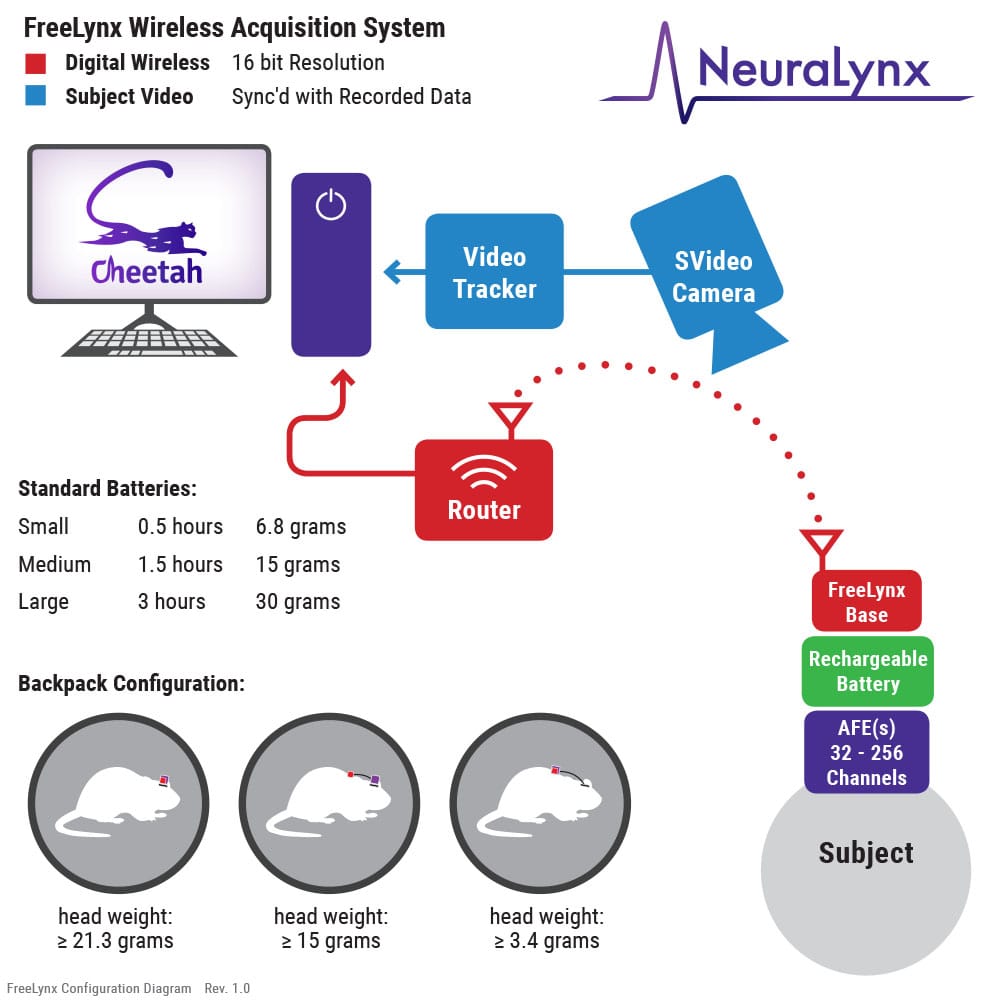
LabLynx
The LabLynx System utilizes a small, battery-powered acquisition device to transmit electrophysiology data wirelessly to a router up to 10 meters distant (depending on environment.) Unlike the FreeLynx, LabLynx is not a subject-mounted wireless headstage. Instead, the LabLynx receives digitized neural signals from up to 4 lightweight, wired, digital multiplexing headstages (HS-xx-mux) for 16 to 256 input channels. The LabLynx System may be configured for optogenetics using Fiber Mounted LEDs and includes digital I/O for experiment control.
Because of its 6-10 hour battery power source, and wireless connection to the acquisition computer, the LabLynx is more portable than other wired electrophysiology installations and may adapt to a greater variety of research settings. LabLynx may also provide a more cost-effective option when the capabilities of the Digital Lynx SX or FreeLynx System are not required.
- 16 to 256 channels with 1 to 8 fixed references
- Warp, Harlan, or Halo Microdrives
- Fiber Mounted LEDs for optogenetic stimulus
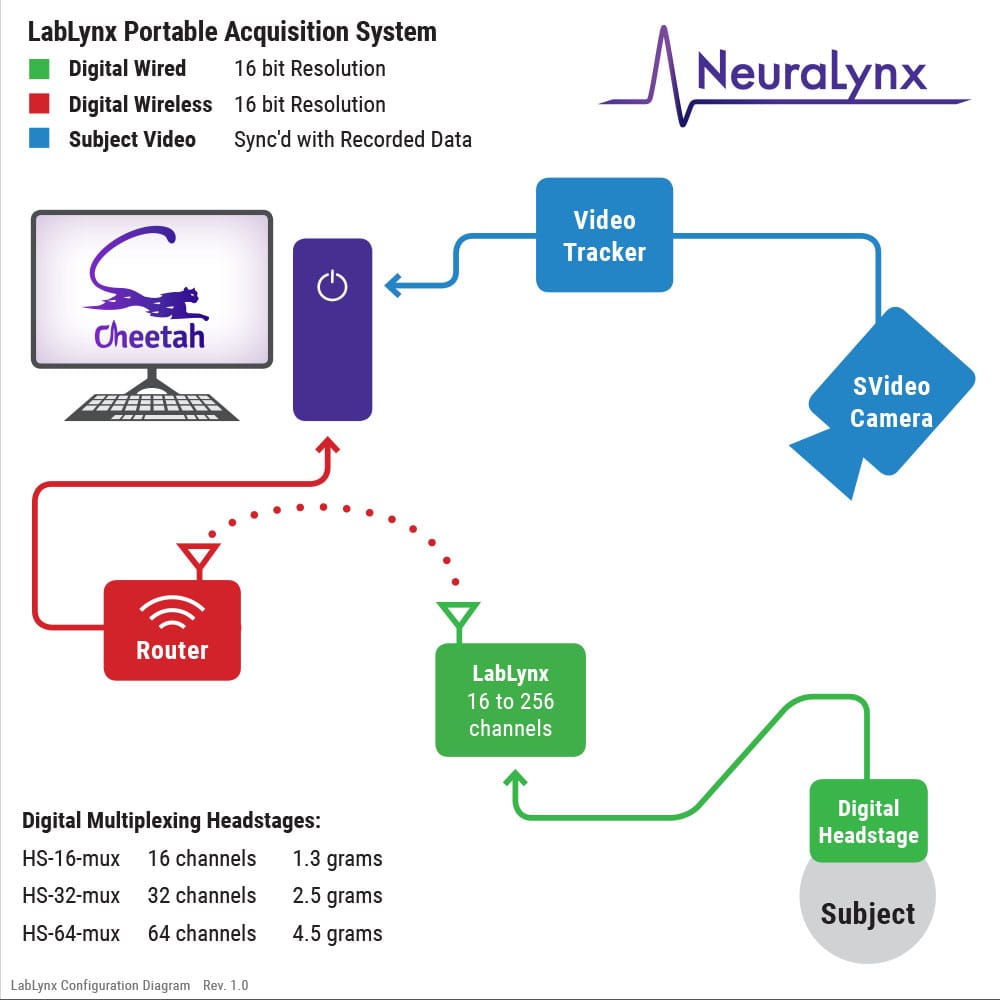
Get A Quote
Contact UsAdditional Specifications
| Configuration | Wavelength | Power | Bandwidth | Input Range | Noise (input Referred |
|---|---|---|---|---|---|
| FreeLynx | 16 bit | 30 kHz | 0.1 Hz – 8 kHz | ±5 mV | < 2.5 μV RMS |
| LabLynx | 16 bit | 30 kHz | 0.1 Hz – 8 kHz | ±5 mV | < 2.5 μV RMS |
| Digital Lynx SX | 24 bit | 40 kHz | DC to 8 kHz | ±132 mV (0.1+ Hz) ±1 V at DC |
< 1.3 μV RMS |

